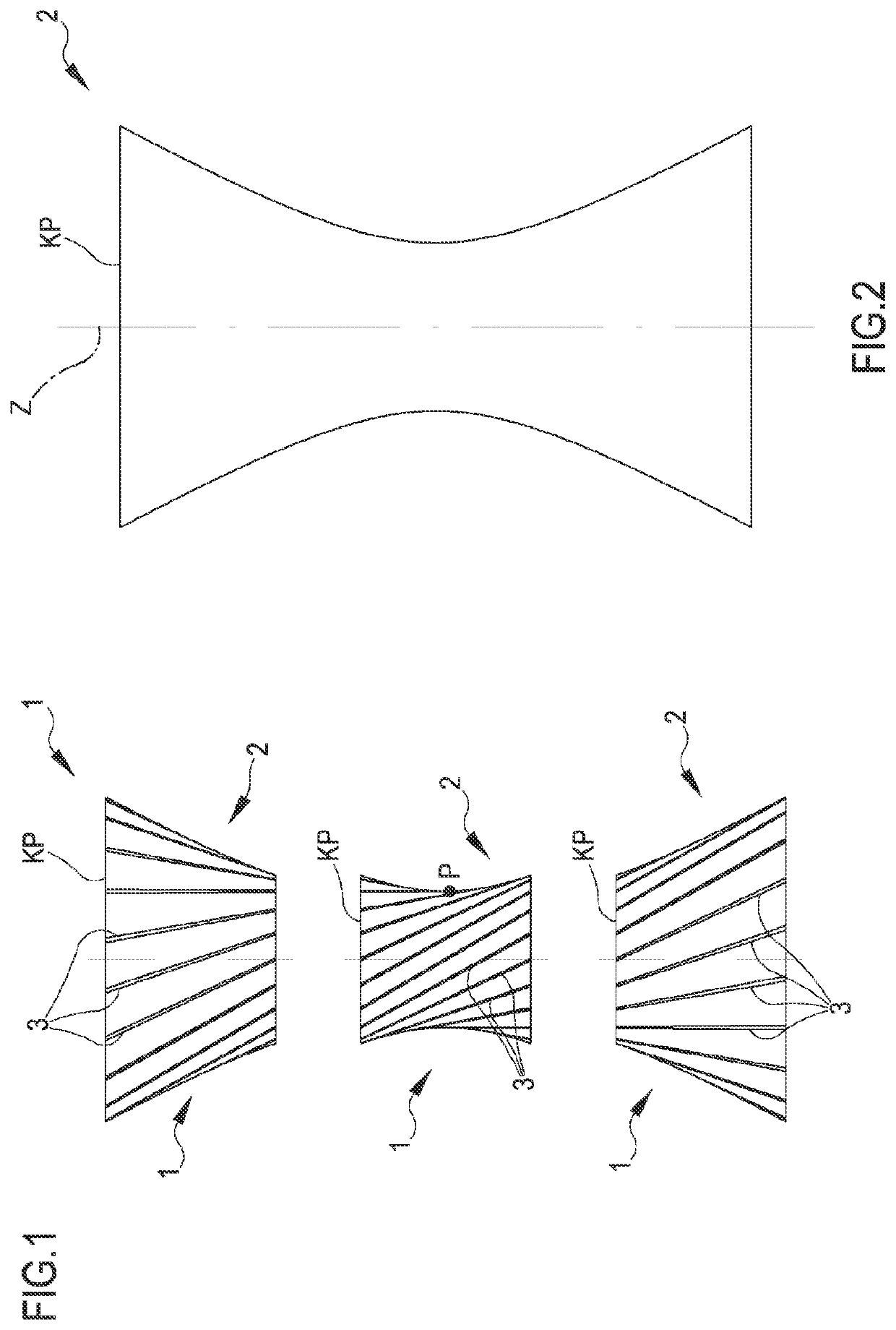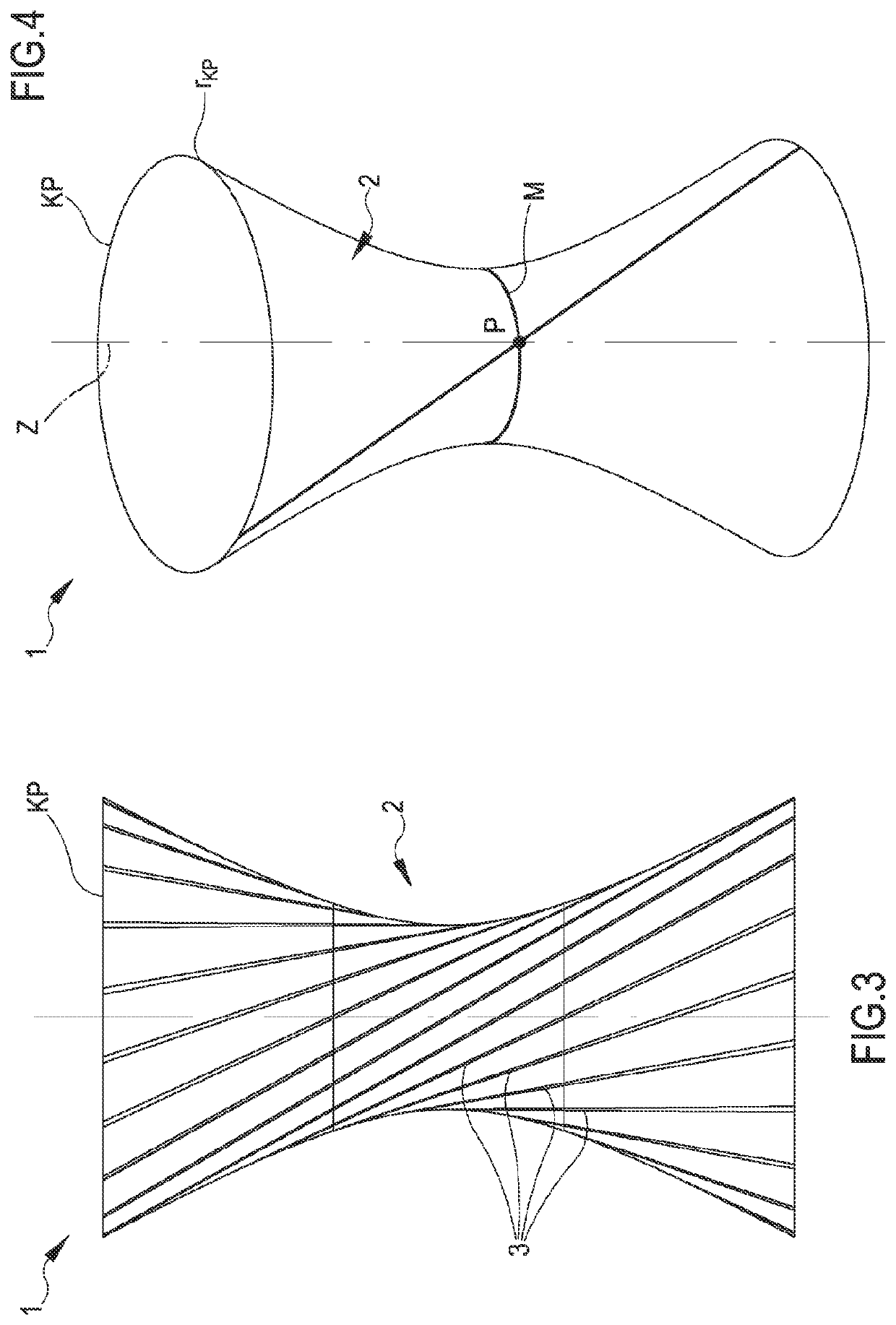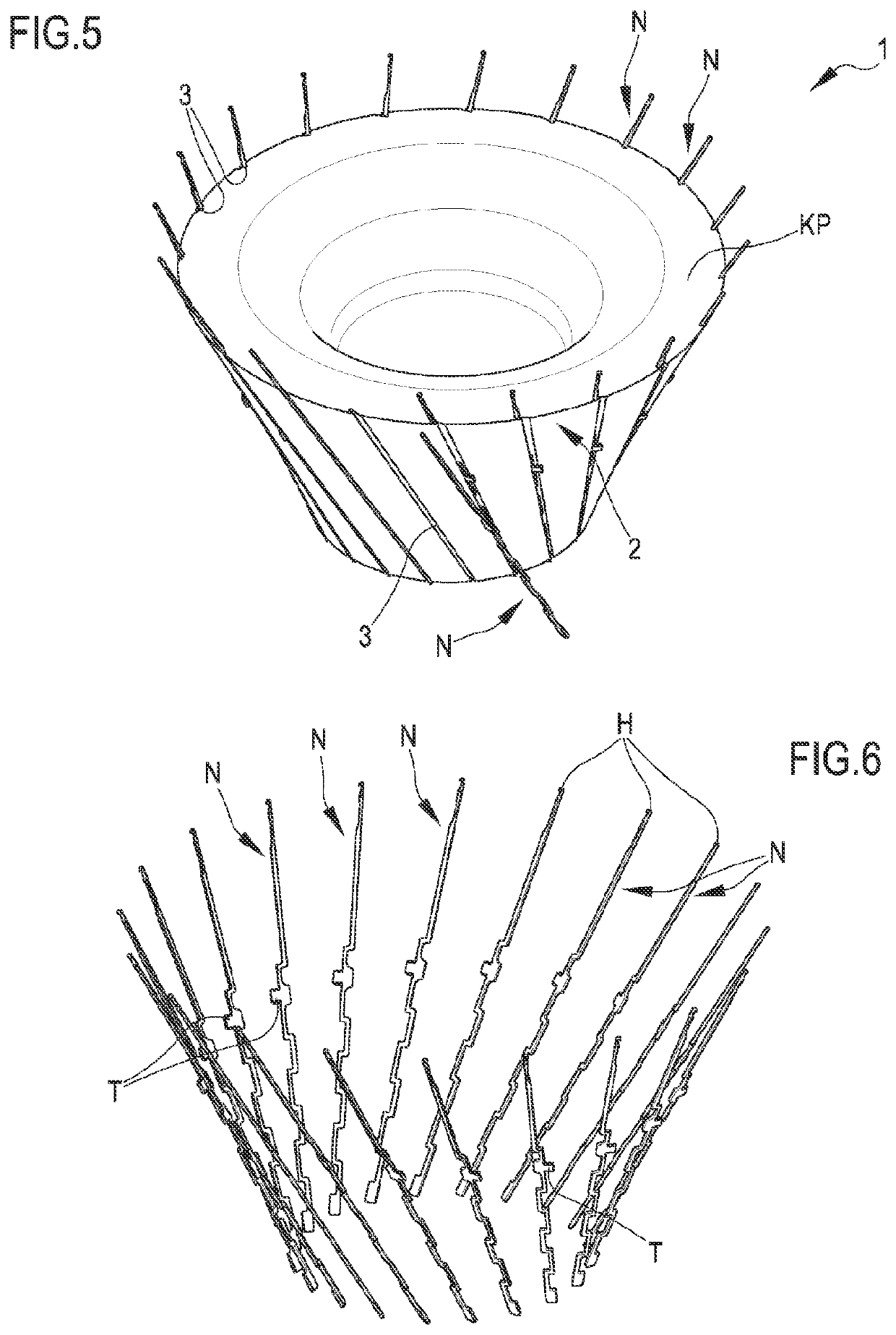Needle-holding unit for a circular knitting machine
a technology of knitting machine and needle holding unit, which is applied in knitting, weft knitting, textiles and papermaking, etc., can solve the problems of not being able to reduce the value of the above-mentioned distance below a given value, and being unable to cast off the old stitch,
- Summary
- Abstract
- Description
- Claims
- Application Information
AI Technical Summary
Benefits of technology
Problems solved by technology
Method used
Image
Examples
Embodiment Construction
[0125]With reference to the mentioned figures, the numeral 1 globally designates a needle-holding unit for circular knitting machines according to the present invention. Generally, the same numeral is used for identical or similar elements, if applicable in their variants of embodiment.
[0126]The needle-holding unit 1 according to the present invention is designed to be introduced into a circular knitting machine for knitted items or seamless knitted items or for hosiery items. In further detail, the needle-holding unit 1 is designed to be mounted in a circular knitting machine comprising at least:[0127]a supporting structure (or frame);[0128]the needle-holding unit itself, turnably mounted to the frame so as to rotate around a central axis;[0129]a plurality of needles supported by the needle-holding unit and moving so as to produce a knitted fabric;[0130]a plurality of yarn feeding points or yarn “feeds”, in which the needles of the machine are supplied with yarn, the feeds being pl...
PUM
 Login to View More
Login to View More Abstract
Description
Claims
Application Information
 Login to View More
Login to View More - R&D
- Intellectual Property
- Life Sciences
- Materials
- Tech Scout
- Unparalleled Data Quality
- Higher Quality Content
- 60% Fewer Hallucinations
Browse by: Latest US Patents, China's latest patents, Technical Efficacy Thesaurus, Application Domain, Technology Topic, Popular Technical Reports.
© 2025 PatSnap. All rights reserved.Legal|Privacy policy|Modern Slavery Act Transparency Statement|Sitemap|About US| Contact US: help@patsnap.com



